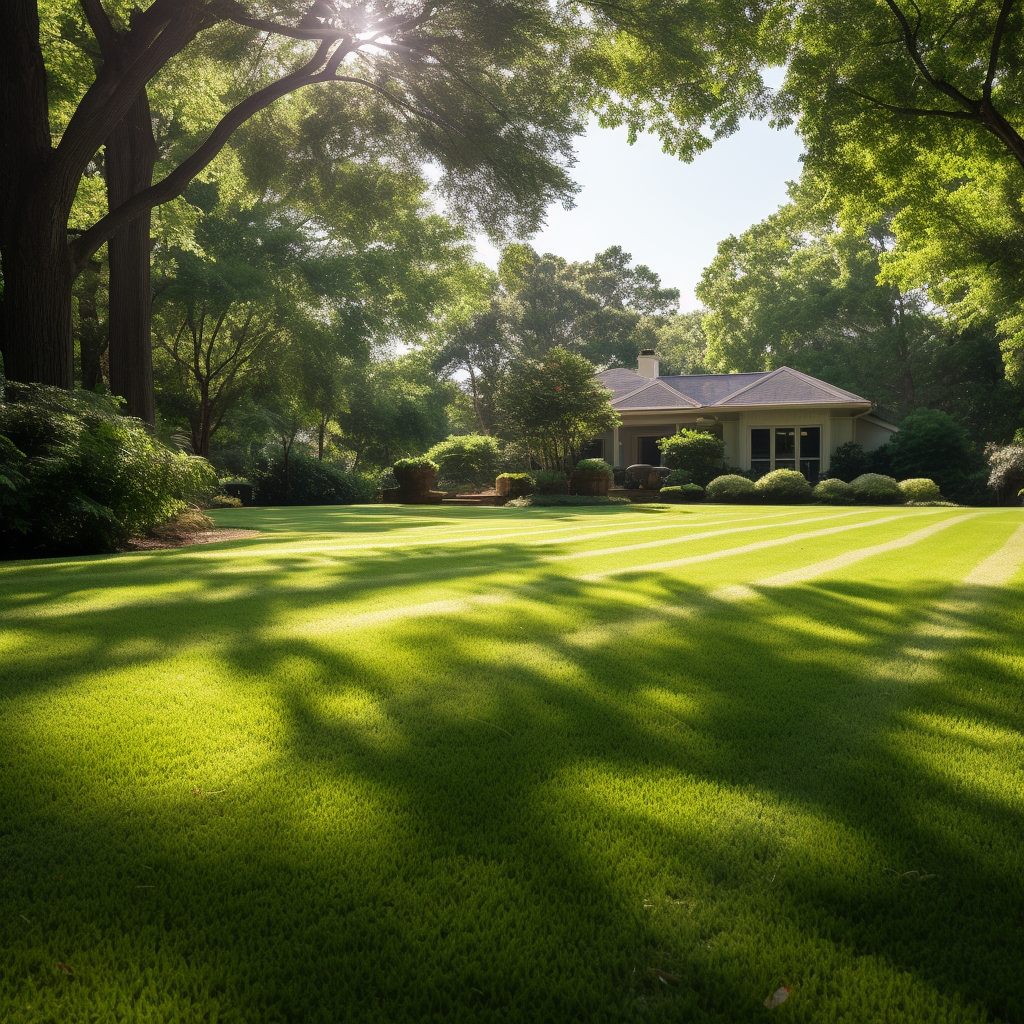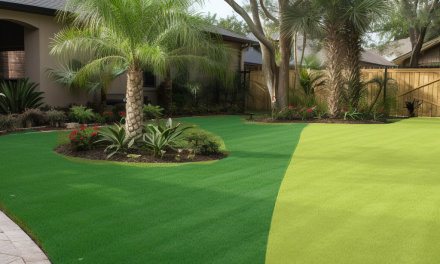Your lawn is more than just a patch of greenery; it’s a reflection of your home, your personal oasis, and a testament to your dedication to nurturing nature. The journey towards cultivating a lush, thriving lawn begins with a critical decision: choosing the right grass type. This comprehensive guide aims to empower you with a deep understanding of various grass types, their unique benefits, and how to make an informed choice based on your geographical location and personal preferences.
Understanding the Importance of Choosing the Right Grass Type
The foundation of a healthy, aesthetically pleasing lawn lies in selecting the grass type that harmonizes with your local climate, soil conditions, and lifestyle. The right grass type will flourish with minimal intervention, embodying resilience, and providing a lush, green carpet that enhances the beauty of your home.
Grass Types: A Closer Look
These cool-season grasses provide options for lawns in regions with cooler climates and varying weather conditions. Dive into the world of grass types, each with its unique set of characteristics, growth patterns, and maintenance requirements.
Cool-Season Grasses:
These cool-season grasses provide options for lawns in regions with cooler climates and varying weather conditions.
Kentucky Bluegrass:
- Known for its fine texture and rich green color, Kentucky Bluegrass is a popular choice for lawns in northern regions.
Fescue:
- Fescue grass is resilient, shade-tolerant, and known for its ability to withstand varying temperature ranges.
Ryegrass:
- Ryegrass is a cool-season grass that establishes quickly and is often used for overseeding warm-season lawns to maintain green color during the cooler months.
Bentgrass:
- Bentgrass is known for its fine texture and is commonly used on golf courses. It’s suitable for cooler climates with consistent moisture.
Fine Fescue:
- Fine fescue includes various species like creeping red fescue, chewings fescue, and hard fescue. They are known for their shade tolerance and resistance to drought, making them a great choice for areas with fluctuating weather patterns.
Warm-Season Grasses:
These warm-season grasses offer a range of options to choose from based on your specific climate and lawn care needs.
Buffalo Grass:
- Buffalo grass, native to North America, is well-suited for transitional climates, requiring minimal water and maintenance.
Bermuda Grass:
- Bermuda grass thrives in warm climates, exhibiting a dense growth pattern and excellent drought tolerance.
Zoysia Grass:
- Zoysia is admired for its lush texture, drought tolerance, and ability to stand up to heavy foot traffic.
St. Augustine Grass:
- St. Augustine grass is well-suited to warm climates, and it’s known for its lush, dark green appearance and ability to tolerate salt spray.
Centipede Grass:
- Centipede grass is a low-maintenance warm-season option that’s ideal for areas with mild winters. It has a coarse texture and is known for its low growth rate.
Transitional Grass Types:
Buffalo Grass:
- Buffalo grass, native to North America, is well-suited for transitional climates, requiring minimal water and maintenance.
- It’s known for its drought tolerance and resilience, making it an excellent choice for areas with fluctuating weather patterns.
Fine Fescue:
- Fine fescue is a versatile grass type that can adapt to a range of conditions, making it suitable for transitional climates.
- It includes various species like creeping red fescue, chewings fescue, and hard fescue.
- Fine fescues are known for their shade tolerance and resistance to drought, making them a great choice for areas with fluctuating weather patterns.
Perennial Ryegrass:
- Perennial ryegrass is another option for transitional regions, as it can tolerate both cool and warm weather.
- It’s known for its fast germination and lush appearance, making it an excellent choice for overseeding existing lawns.
Tall Fescue:
- Tall fescue is a cool-season grass that can also adapt to transitional climates.
- It has good drought resistance and can maintain its green color during hot spells, making it suitable for regions with varying temperatures.
Bahia Grass:
- Bahia grass is a warm-season grass that can thrive in transitional climates, especially those with mild winters.
- It’s known for its durability and ability to withstand both drought and heavy rainfall.
Factors to Consider When Choosing Grass Type
Selecting the right grass type for your lawn is a decision that hinges on various factors, each contributing to the overall health and beauty of your outdoor space. These factors are like puzzle pieces, and when placed together correctly, they form a picture-perfect lawn. Here are the key considerations:
Climate: Understanding Your Region’s Personality
One of the primary factors to weigh is the climate of your region. The local climate will profoundly impact the success of your chosen grass type. Here’s what you need to assess:
Temperature Ranges: Take note of the temperature fluctuations in your area throughout the year. Different grass species thrive in various temperature ranges. For instance, cool-season grasses excel in regions with cold winters, while warm-season grasses thrive in hotter climates.
Rainfall Patterns: Consider the amount and distribution of rainfall in your region. Some grass types are more drought-tolerant, while others require regular moisture. Matching your grass type to the natural rainfall patterns can reduce the need for extensive watering.
Growing Seasons: Evaluate the length of your growing seasons. In regions with short growing seasons, cool-season grasses that can withstand cooler temperatures may be preferred. Conversely, in areas with long growing seasons, warm-season grasses that thrive in heat may be a better fit.
Soil Quality: The Foundation of Healthy Growth
The condition of your soil is another critical factor to contemplate when selecting a grass type. Conducting a soil test can provide valuable insights into your soil’s characteristics:
pH Level: Determine the pH level of your soil. Some grasses prefer acidic soils, while others thrive in alkaline conditions. Adjusting the pH can make a significant difference in grass health.
Nutrient Content: Assess the nutrient content of your soil, particularly nitrogen, phosphorus, and potassium. Different grass species have varying nutrient requirements, and understanding your soil’s composition can guide your fertilization strategy.
Drainage Capacity: Evaluate how well your soil drains. Soil that retains too much water can lead to root rot, while overly sandy soil may drain too quickly, leaving grass thirsty. Choosing a grass type that matches your soil’s drainage capacity can prevent these issues.
Maintenance Preference: Balancing Effort and Aesthetics
Consider your willingness and capacity for lawn maintenance. Grass types vary in their maintenance requirements, so align your choice with your preferences:
Mowing: Some grasses grow rapidly and require frequent mowing, while others have a slower growth rate, reducing the need for frequent mowing sessions.
Watering: Determine how often you can commit to watering your lawn. Some grasses are more drought-resistant and can withstand periods of dryness, while others need consistent moisture.
Fertilization: Assess your fertilization preferences and schedule. Different grass types may have specific nutrient needs, and understanding these requirements can guide your fertilization routine.
By carefully considering these factors and selecting a grass type that suits your climate, soil quality, and maintenance preferences, you set the stage for a healthy, vibrant lawn that enhances the beauty of your home. It’s a holistic approach that ensures your lawn thrives in its unique environment, becoming a testament to your care and attention
Cultivating Your Selected Grass Type: A Journey of Growth
With the right grass type chosen to suit your region, soil, and preferences, it’s time to embark on the exciting journey of cultivation. This journey transforms your lawn from a mere patch of earth into a lush, thriving oasis. Here’s your roadmap to cultivating a beautiful lawn:
Soil Preparation: The Foundation of Success
Clearing and Cleaning: Before sowing your grass seeds, ensure the area is free of debris, weeds, and rocks. Clear away any obstacles that might hinder the grass’s growth.
Soil Testing and Amendment: Referencing your earlier soil test, consider making any necessary soil amendments. Adjusting the pH and adding nutrients as required ensures your grass has a healthy environment to root and grow.
Sowing the Seeds of Potential
Choosing the Right Time: Timing is crucial when it comes to sowing grass seeds. Consult local guidelines or experts to determine the optimal time for your chosen grass type. Generally, early fall and spring are suitable seasons for seeding.
Even Distribution: Using a spreader, evenly distribute your grass seeds over the prepared soil. Following recommended seeding rates ensures adequate coverage for a thick, healthy lawn.
Seed to Soil Contact: Gently rake the soil to ensure good seed-to-soil contact. This helps the seeds settle in and promotes germination.
Nurturing Tender Growth
Watering: Keep the soil consistently moist after sowing. Adequate watering is essential for germination and the establishment of young grass plants. Water deeply and regularly to prevent drying out or overwatering.
First Mowing: Once your grass reaches a height of around 3 inches, it’s time for its first mow. Use a sharp mower blade and never remove more than one-third of the grass height at once. This encourages strong root development.
Ongoing Maintenance: The Art of Lawn Care
Regular Mowing: Establish a regular mowing schedule that aligns with your grass type’s growth rate. Maintaining the right grass height helps in weed suppression and encourages a healthy lawn.
Fertilization: Follow a fertilization schedule tailored to your grass type’s nutrient requirements. Proper feeding ensures lush, vibrant growth.
Weed and Pest Management: Keep an eye out for weeds and pests. Promptly address any issues to prevent them from taking hold in your lawn.
Aeration and Overseeding: Periodically aerate your lawn to relieve soil compaction and promote healthy root growth. Over time, consider overseeding to rejuvenate your grass.
Enjoying the Fruits of Your Labor
As the weeks and months pass, your carefully cultivated lawn will transform before your eyes. It will become a lush carpet of green, a testament to your dedication and nurturing care. Your lawn will be more than just grass; it will be a living, breathing entity that enhances the beauty of your home and provides a soothing retreat for you and your loved ones.
Your Grass, Your Green Canvas
In the circle of lawn care, from choosing the right grass type to the meticulous cultivation and ongoing maintenance, your lawn is more than just a patch of green—it’s a canvas. It’s a canvas upon which you paint your commitment to nature, your dedication to beauty, and your passion for nurturing a living landscape. As the seasons change, your grass grows, and your canvas evolves. It’s a dynamic relationship where you, as the artist, guide your lawn through the colors of life. The lush green of spring, the vibrant growth of summer, the earthy transitions of autumn, and the restful slumber of winter—each season contributes to the masterpiece that is your lawn.
But your role as a caretaker goes beyond aesthetics. Your lawn is a sanctuary for biodiversity, a haven for pollinators, and a playground for your family and friends. It’s a living ecosystem that breathes life into your outdoor space and into your soul.
As you’ve discovered in this holistic exploration of grass types and cultivation, it’s a journey of harmony. It’s about finding the right balance between nature’s rhythms and your preferences, between vibrant growth and serene maintenance, between ecological stewardship and personal fulfillment.
Your lawn becomes a mirror, reflecting your values, your efforts, and your connection with the natural world. It’s a testament to the artistry of nature and the artistry of your care.
So, whether you’re gazing at the lush expanse of your lawn from your porch, feeling the cool grass beneath your feet, or sharing a picnic with loved ones on a sunny afternoon, remember that your lawn is more than just grass—it’s a canvas of life, a living testament to your journey of cultivation and care. And as you tend to it with love and mindfulness, it responds with beauty, vitality, and the promise of many green seasons to come.

Amazon and the Amazon logo are trademarks of Amazon.com, Inc, or its affiliates.AMAZON AFFILIATE DISCLOSURE The Garden Whisperer Tips blog is a participant in the Amazon Services LLC Associates Program, an affiliate advertising program designed to provide a means for sites to earn advertising fees by advertising and linking to Amazon.com. As an Amazon Associate, we earn from qualifying purchases. Some of the links on this blog are affiliate links, and if you go through them to make a purchase, we will earn a commission at no extra cost to you. AFFILIATE MARKETING AND ADVERTISEMENT TRANSPARENCY At Garden Whisperer Tips, we believe in full transparency with our readers. We participate in multiple affiliate marketing programs, and some of the links on this blog may be affiliate links. This means we may earn a commission if you click on the link or make a purchase using the link. We also host advertisements on our blog, which helps us generate revenue. Rest assured, our editorial content is not influenced by advertisers or affiliate partnerships.





